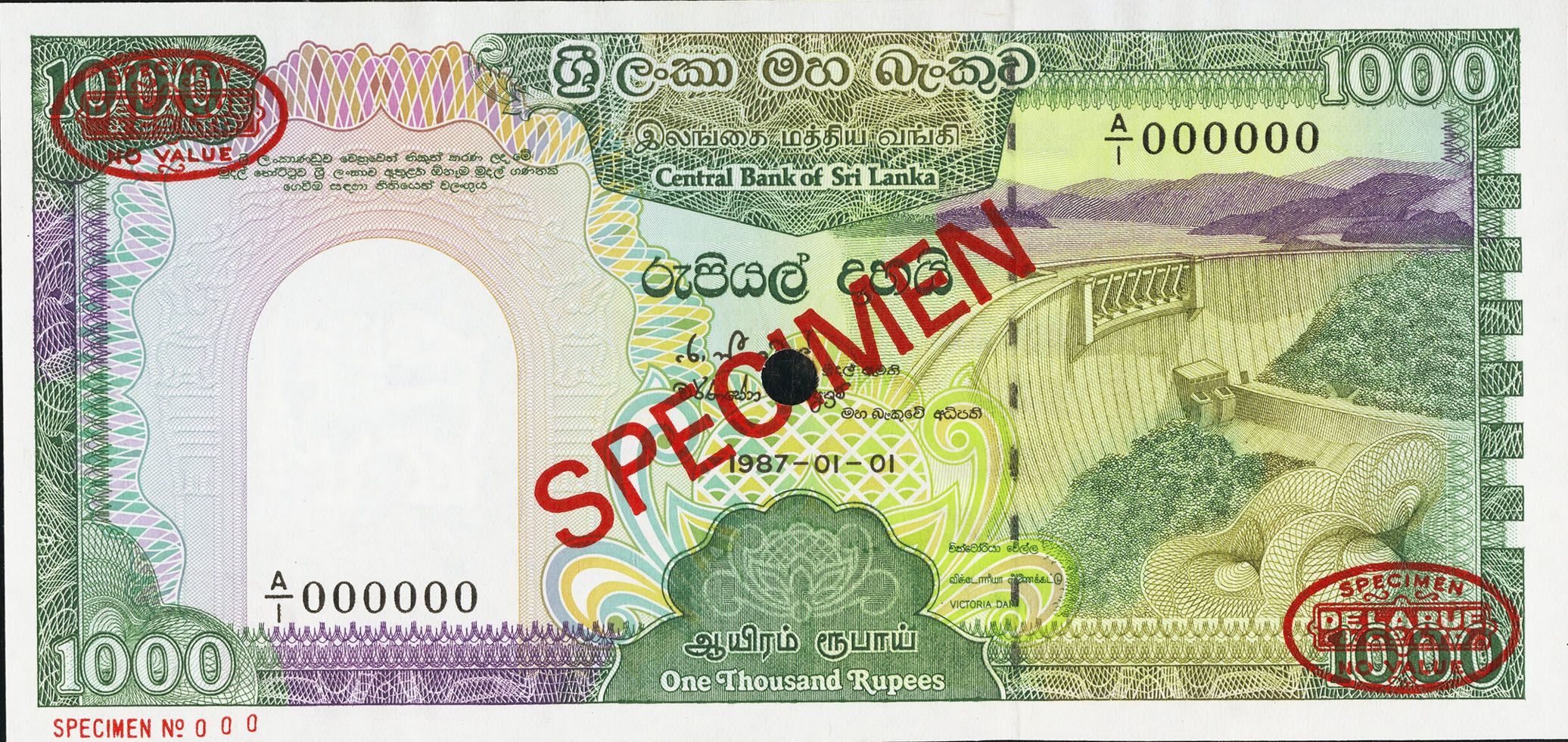
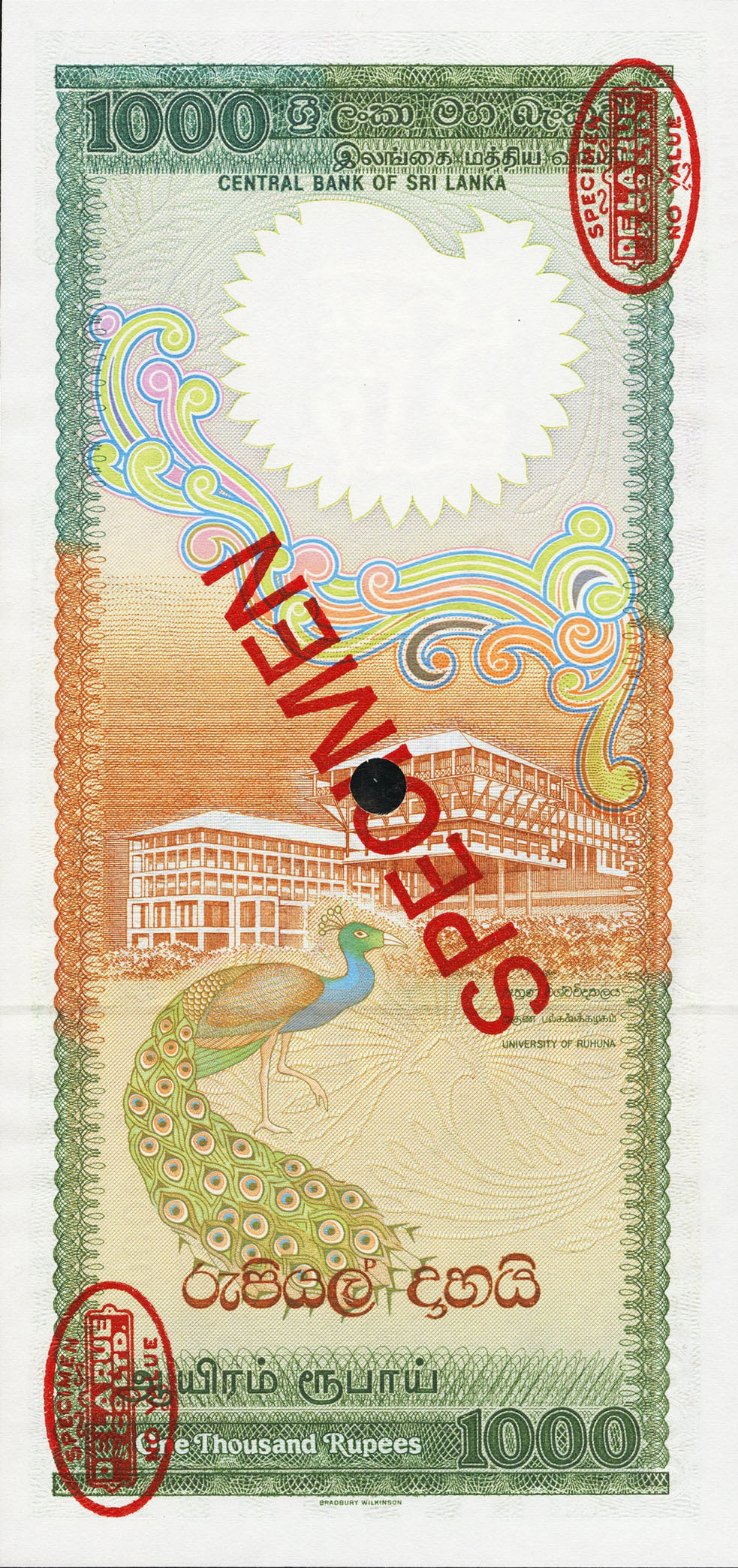
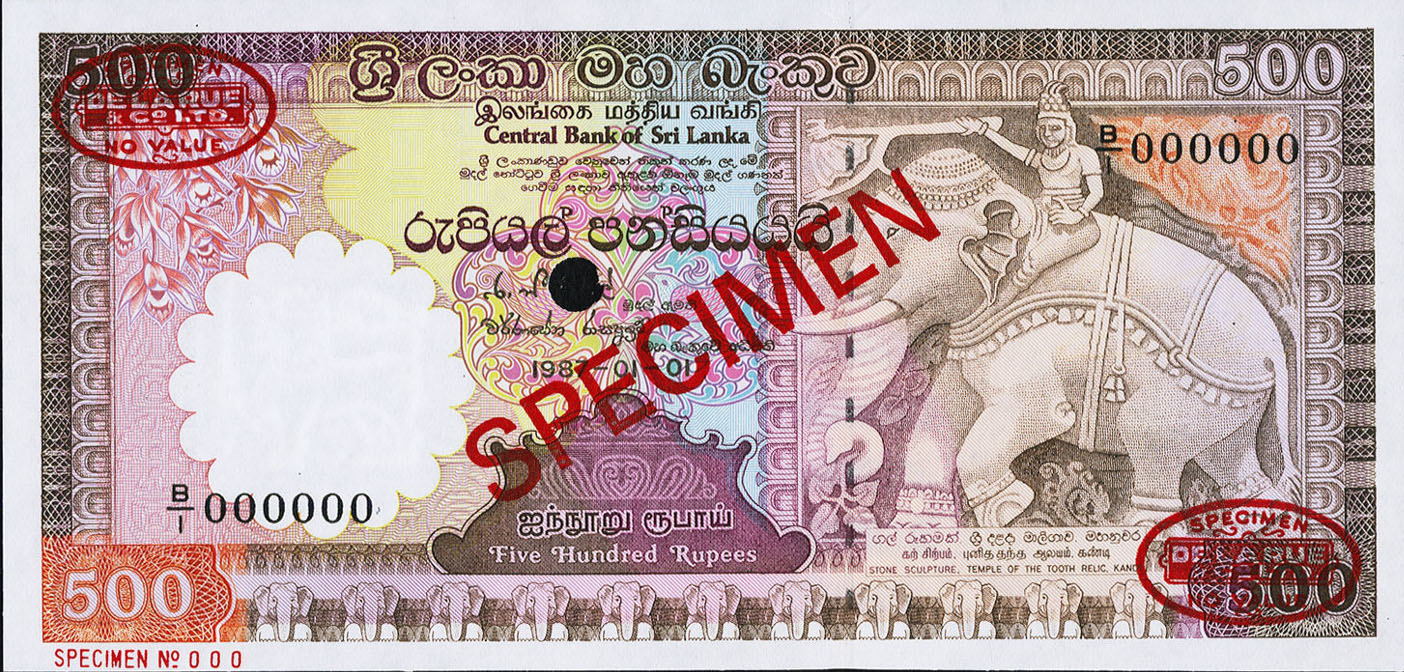
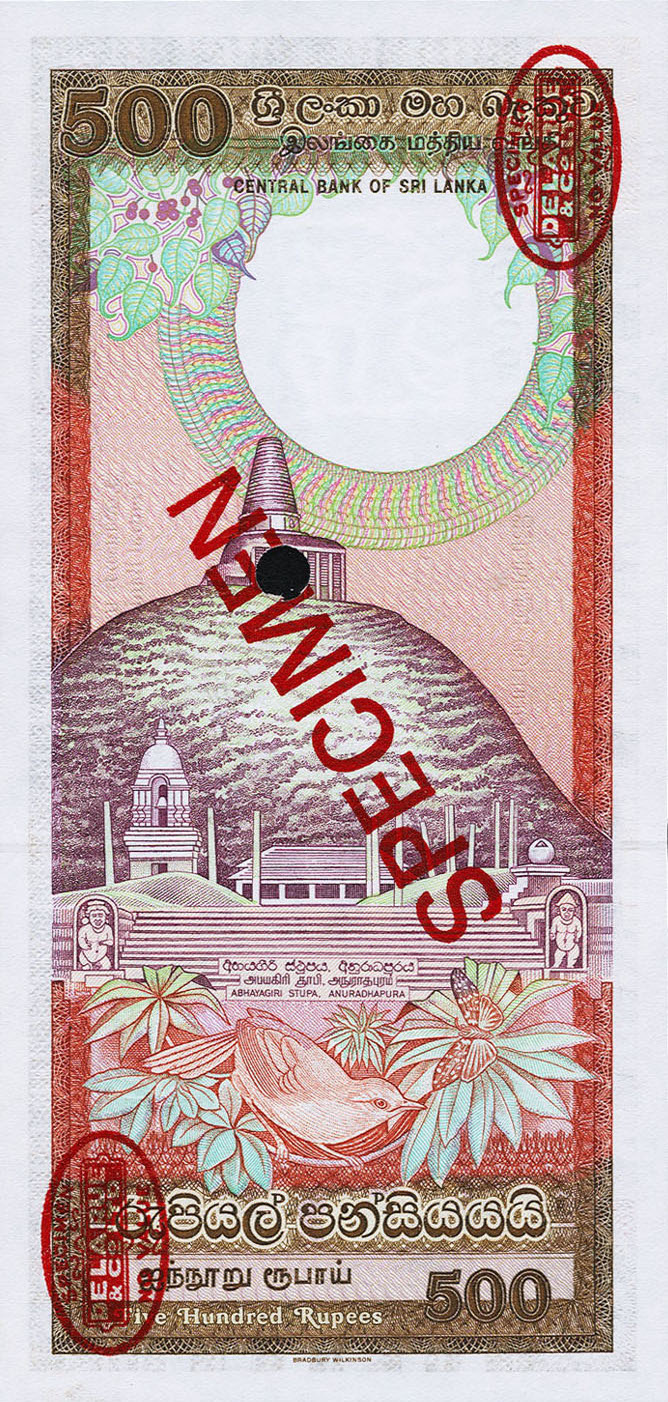
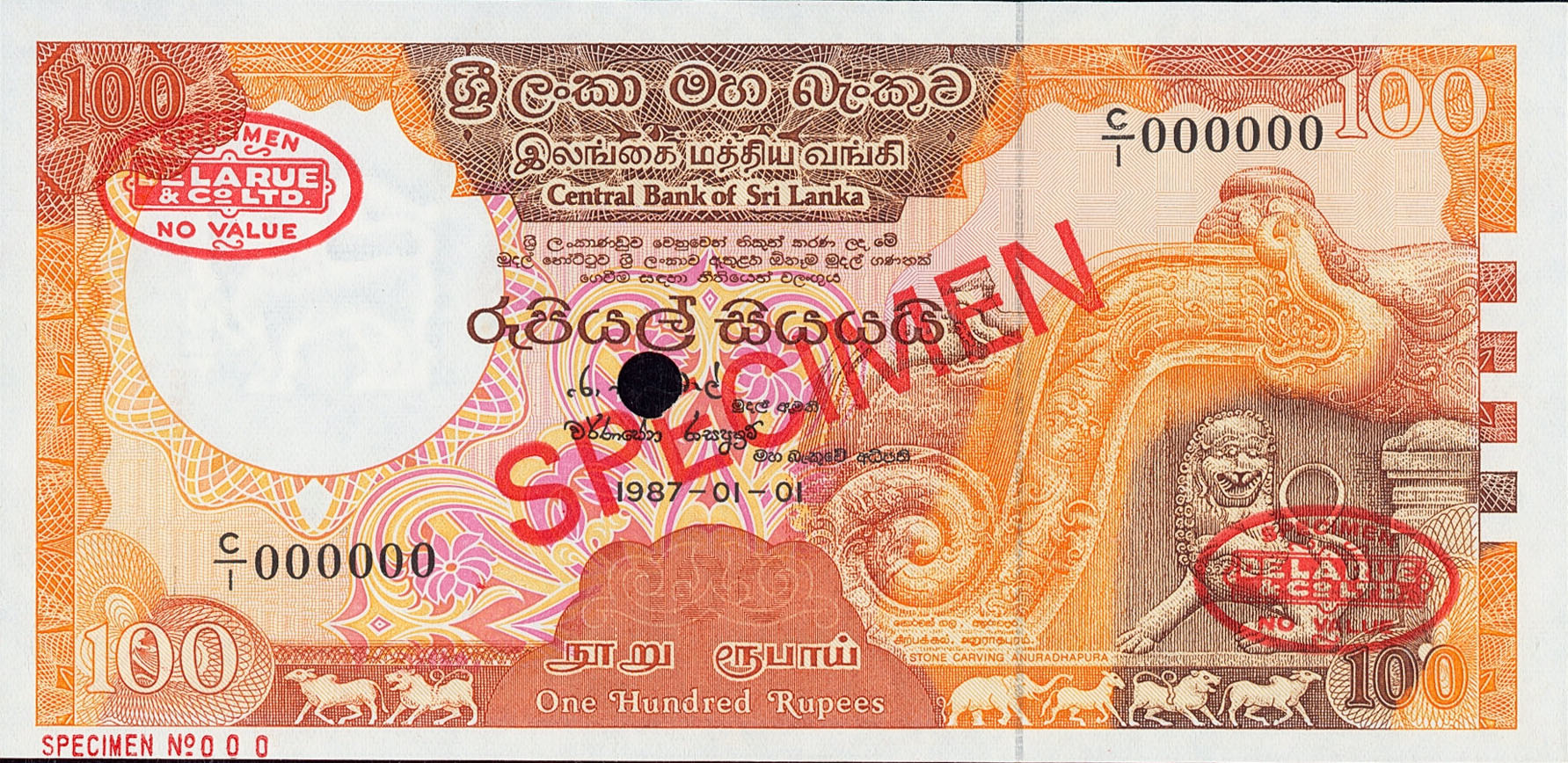
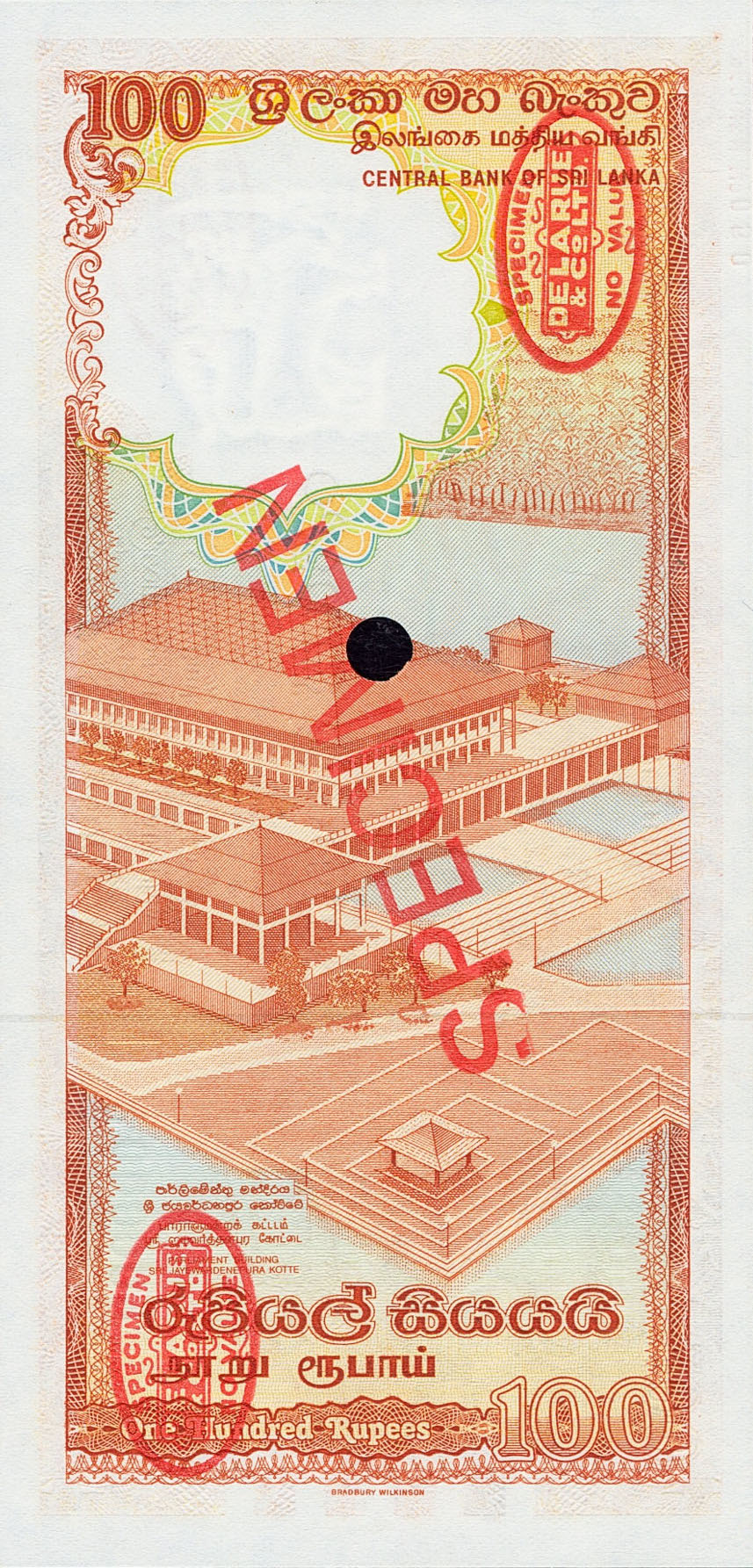
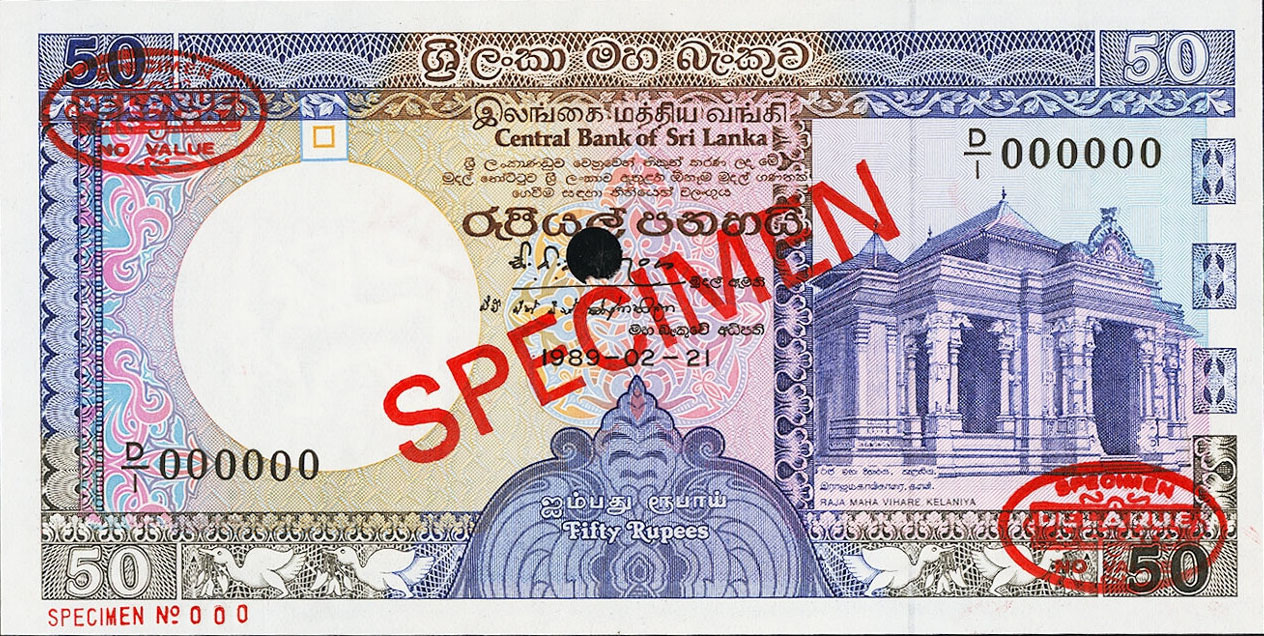
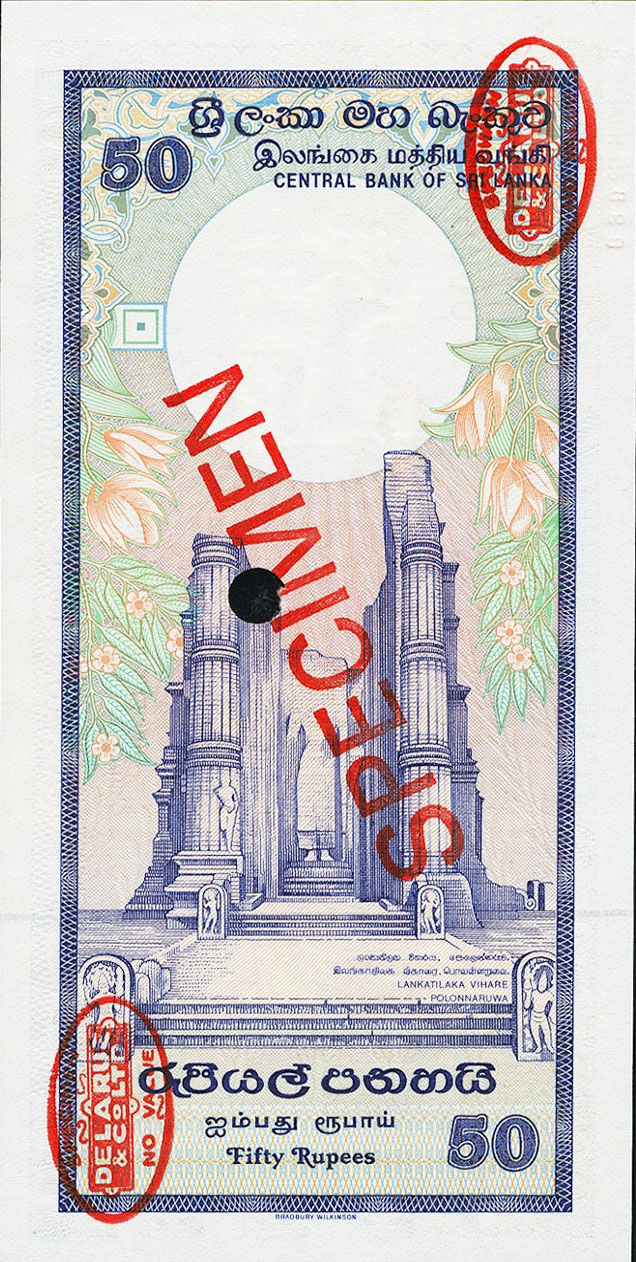
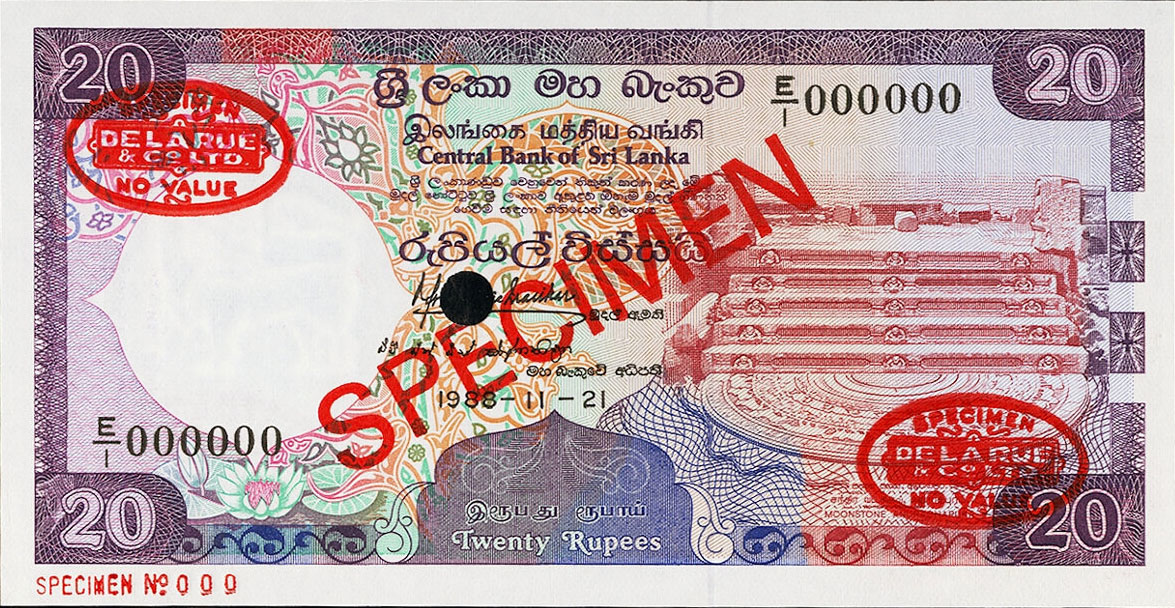
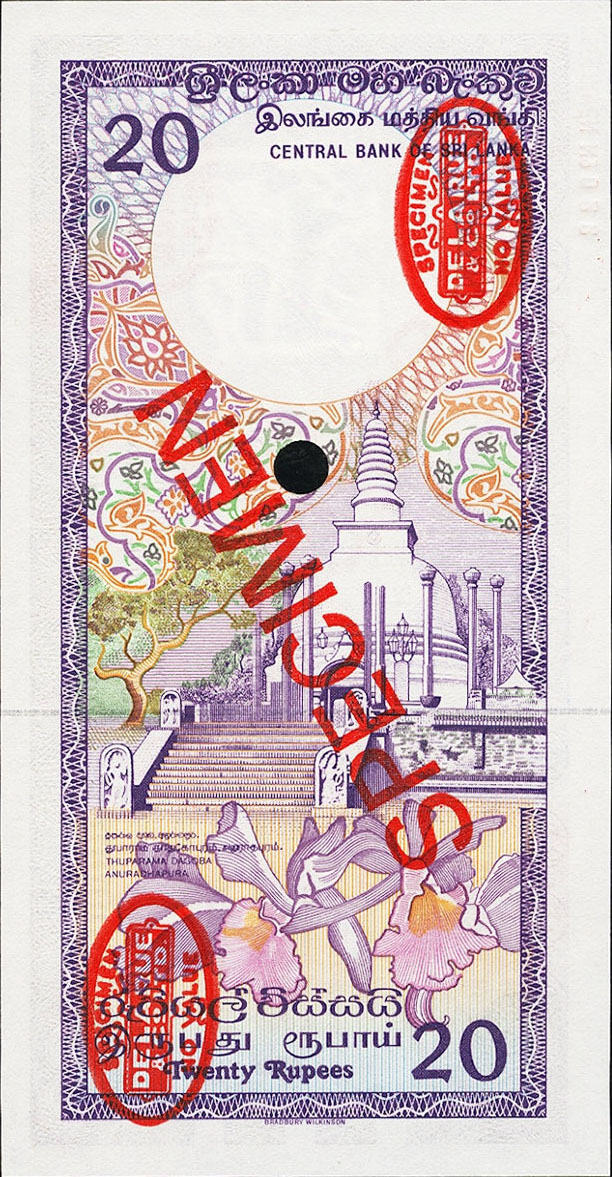
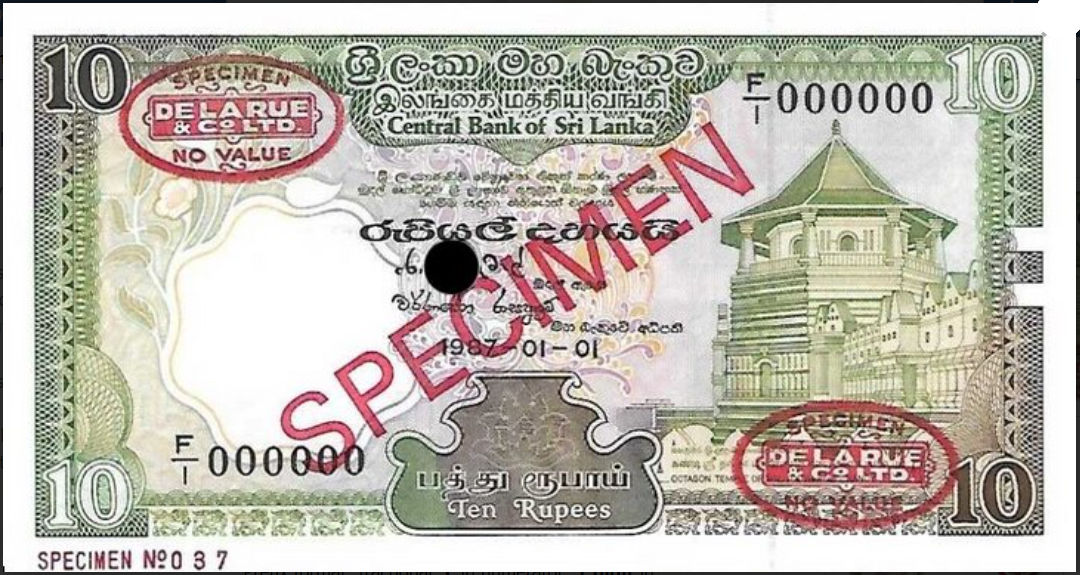
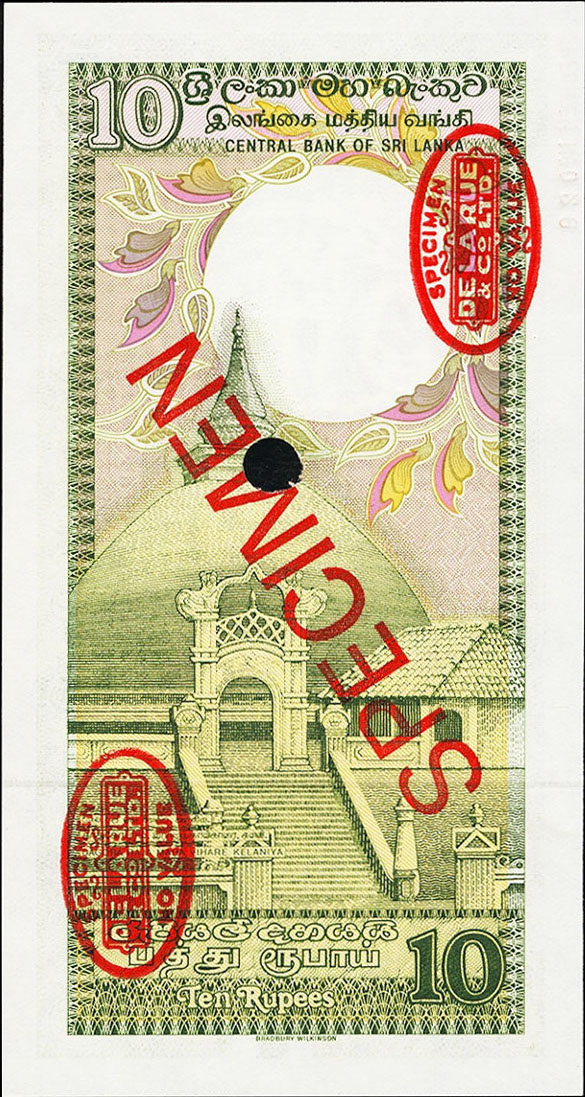
Bradbury Wilkinson started printing the notes after the formation of the Central Bank in August 1950. The only exception were the notes printed by DeLaRue dated 1970 October and December for the Demonetization of older Rs50 and Rs100. In 1984 Bradbury Wilkinson opened a factory in Biyagama, Sri Lanka with the Central Bank holding a 40% stake.
Bradbury Wilkinson was acquired by DeLaRue in 1986. In 1986 maybe coinsidentally the Central Bank of Ceylon changed its name to Central Bank of Sri Lanka. In the 1987 issue DeLaRue instituted major changes. In addition to some changes to the design they introduced replacement *-notes that DeLaRue had also used in 1970, but had never been used by Bradbury Wilkinson.

| 
| Green | 175x83 mm | Rs1000 notes |

| 
| Brown | 165x79 mm | Rs 500 notes |

| 
| Orange | 155x76 mm | Rs 100 notes |

| 
| Blue | 146x73 mm | Rs 50 notes |

| 
| Violet | 137x70 mm | Rs 20 notes |

| 
| Green | 127x67 mm | Rs 10 notes |
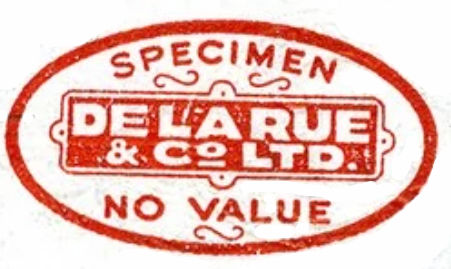 The Specimens issued for all six denominations of these notes had the
Red oval shaped SPECIMEN NO VALUE logo
of DELARUE & Co
LTD stamped on them on the upper left and lower right with
large SPECIMEN diagonally upwards
across on both sides in landscape orientation.
The Specimens issued for all six denominations of these notes had the
Red oval shaped SPECIMEN NO VALUE logo
of DELARUE & Co
LTD stamped on them on the upper left and lower right with
large SPECIMEN diagonally upwards
across on both sides in landscape orientation.
A single punch hole in the middle space used for the signatures and date.
A specimen control number is stamped on the front lower left margin as
SPECIMEN No. NN.
Normally a bundle of 100 are printed for distribution to local Banks.
However, the name BRADBURY WILKINSON appears on the middle of the bottom margin of the portrait (left in landscape as displayed below) back of the notes of this series of Currency Notes printed in this Branch until 1990. Maybe they retained the older name till they were able to renegotiate the contract.
This webpage was added following a dicscussion in 2022 October on the IBNS WhatsApp group. The specimen note images at 220+ dpi from online Auctions, are displayed above at 25 dpi.
The specimen note images at 215+ dpi from online Auctions, are displayed above at 25 dpi.